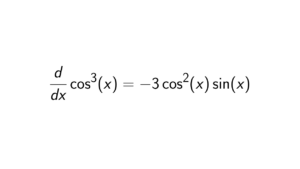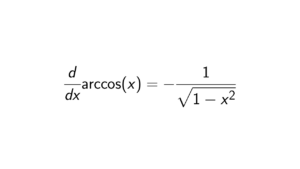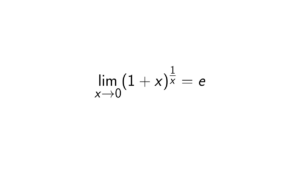This article will explain how to find the inverse of a n \times n matrix by using minors, cofactors, and adjugate. First, we will start with the general form, how to apply the above tools. After that, we will see an example of how to apply that on the 2 \times 2 and 3 \times 3 matrix. If you are unfamiliar with the invertible matrix, check this article.
How to find the inverse of a nxn matrix
Let A be a n \times n matrix. Specifically:
A = \begin{bmatrix}\begin{array}{cccc}
a_{1,1} & a_{1,2} & \cdots & a_{1,n} \\
a_{2,1} & a_{2,2} & \cdots & a_{2,n} \\
\vdots & \vdots & \ddots & \vdots \\
a_{n,1} & a_{n,2} & \cdots & a_{n,n}
\end{array}\end{bmatrix}First step: finding the minors of a nxn matrix
We already have written an article about finding minors, so we give here the resulting matrix of minors M for the matrix A:
M = \begin{bmatrix}\begin{array}{cccc}
M_{1,1} & M_{1,2} & \cdots & M_{1,n} \\
M_{2,1} & M_{2,2} & \cdots & M_{2,n} \\
\vdots & \vdots & \ddots & \vdots \\
M_{n,1} & M_{n,2} & \cdots & M_{n,n}
\end{array}\end{bmatrix} Second step: finding the cofactor matrix
If we look at the matrix of minors M above, then each minor needs to be rewritten as
\begin{equation*}
M_{i,j} = (-1)^{i + j} M_{i,j}
\end{equation*}to get the cofactor matrix. The resulting cofactor matrix C will be
C = \begin{bmatrix}\begin{array}{cccc}
(-1)^{1 + 1}M_{1,1} & (-1)^{1 + 2}M_{1,2} & \cdots & (-1)^{1 + n}M_{1,n} \\
(-1)^{2 + 1} M_{2,1} & (-1)^{2 + 2}M_{2,2} & \cdots & (-1)^{2 + n}M_{2,n} \\
\vdots & \vdots & \ddots & \vdots \\
(-1)^{n + 1}M_{n,1} & (-1)^{n + 2}M_{n,2} & \cdots & (-1)^{n + n}M_{n,n}
\end{array}\end{bmatrix} If i + j is odd, then the minor will be multiplied by -1. If i + j is even, then it will be multiplied by 1 (so nothing will happen). It is also evident that the minors on the diagonal remain the same since adding two equal integers will result in an even integer.
Third step: adjucate the matrix
Now we applied the first two steps, and so far, we have found the cofactor C of the matrix A. Our third step is to find the adjugate of a matrix A. That is finding the transpose of the cofactor matrix C of A:
\text{adj}(A) = C^{T} = \begin{bmatrix}\begin{array}{cccc}
(-1)^{1 + 1}M_{1,1} & (-1)^{2 + 1} M_{2,1} & \cdots & (-1)^{n + 1}M_{n,1} \\
(-1)^{1 + 2}M_{1,2} & (-1)^{2 + 2}M_{2,2} & \cdots & (-1)^{n + 2}M_{n,2} \\
\vdots & \vdots & \ddots & \vdots \\
(-1)^{1 + n}M_{1,n} & (-1)^{2 + n}M_{2,n} & \cdots & (-1)^{n + n}M_{n,n}
\end{array} \end{bmatrix}Fourth step: finding the determinant of the original matrix
Our last step is to find the determinant of the matrix A. If we have find that, we can plug everything together, and we will get the resulting inverse of matrix A:
\begin{equation*}
A^{-1} = \frac{1}{\text{det}(A)} \text{adj}(A)
\end{equation*}Example of an inverse of a 2×2 matrix
We will give an example of how to find the inverse of a 2×2 matrix.
A = \begin{bmatrix}\begin{array}{cc}
5 & -2 \\
7 & 3
\end{array}\end{bmatrix} First step: finding the minors of matrix A
We have done an example of finding the matrix of minors of the same 2\times 2 matrix A in this article.
M = \begin{bmatrix}\begin{array}{cc}
3 & 7 \\
-2 & 5
\end{array}\end{bmatrix} Second step: finding the cofactor matrix of A
The minors on diagonal will stay the same, but the minors M_{1,2} and M_{2,1} have an odd integer (1 + 2 = 2 + 1 = 3). Therefore, those two minors will be multiplied with -1:
C = \begin{bmatrix}\begin{array}{cc}
3 & -7 \\
2 & 5
\end{array}\end{bmatrix} Third step: adjucate the matrix A
\text{adj}(A) = C^{T} = \begin{bmatrix}\begin{array}{cc}
3 & 2 \\
-7 & 5
\end{array}\end{bmatrix} Fourth step: finding the determinant of the original matrix A
First we need to calculate the determinant: \text{det}(A) = 5 \cdot 3 - (-2 \cdot 7) = 29. Now we plug everything together, and we will get the resulting inverse matrix of A:
A^{-1} = \frac{1}{\text{det}(A)} \text{adj}(A) = \frac{1}{29} \begin{bmatrix}\begin{array}{cc}
3 & 2 \\
-7 & 5
\end{array}\end{bmatrix} Example of an inverse of a 3×3 matrix
We will give an example of how to find the inverse of a 3×3 matrix.
A = \begin{bmatrix}\begin{array}{ccc}
3 & -1 & 6 \\
2 & 5 & 7 \\
1 & -3 & 1
\end{array}\end{bmatrix} First step: finding the minors of matrix A
We have done an example of finding the matrix of minors of the same 3\times 3 matrix A in this article.
M = \begin{bmatrix}\begin{array}{ccc}
26 & -5 & -11 \\
17 & -3 & -8 \\
-37 & 9 & 17
\end{array}\end{bmatrix}Second step: finding the cofactor matrix of A
The minors M_{1,2}, M_{2,1}, M_{2,3}, and M_{3,2} will be multiplied by -1, since the sum of the row and column position is odd.
C = \begin{bmatrix}\begin{array}{ccc}
26 & 5 & -11 \\
-17 & -3 & 8 \\
-37 & -9 & 17
\end{array}\end{bmatrix}Third step: adjucate the matrix A
\text{adj}(A) = C^{T} = \begin{bmatrix}\begin{array}{ccc}
26 & -17 & -37 \\
5 & -3 & -9 \\
-11 & 8 & 17
\end{array}\end{bmatrix}Fourth step: finding the determinant of the original matrix A
Finding the determinant of this example will cost more calculations than the previous one:
\text{det}(A) = 3 \cdot \begin{vmatrix}
5 & 7 \\
-3 & 1
\end{vmatrix} - 2 \cdot \begin{vmatrix}
-1 & 6 \\
-3 & 1
\end{vmatrix} + \cdot \begin{vmatrix}
-1 & 6 \\
5 & 7
\end{vmatrix}
= 3(5\cdot 1 - 7\cdot (-3)) - 2((-1)\cdot 1 - 6\cdot (-3)) + (-1)\cdot 7 - 6 \cdot 5
= 3\cdot26 - 2\cdot 17 - 7 - 30 = 7
Now we plug everything together, and we will get the resulting inverse matrix of A:
A^{-1} = \frac{1}{\text{det}(A)} \text{adj}(A) = \frac{1}{7} \begin{bmatrix}\begin{array}{ccc}
26 & -17 & -37 \\
5 & -3 & -9 \\
-11 & 8 & 17
\end{array}\end{bmatrix}Conclusion
This is probably one of the easiest ways to find the inverse of a matrix. There is also another way to find the inverse, that is, by using the Gauss-Jordan Method.


